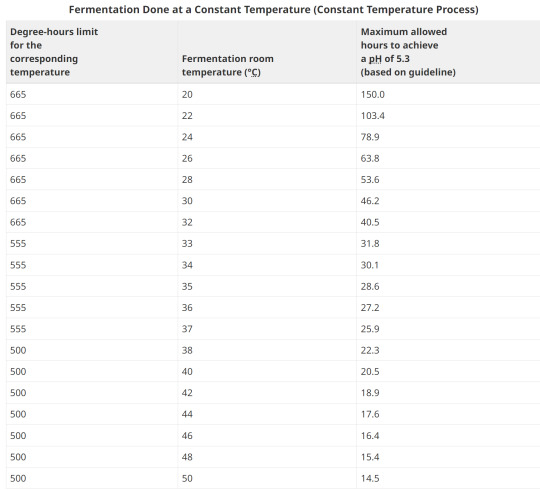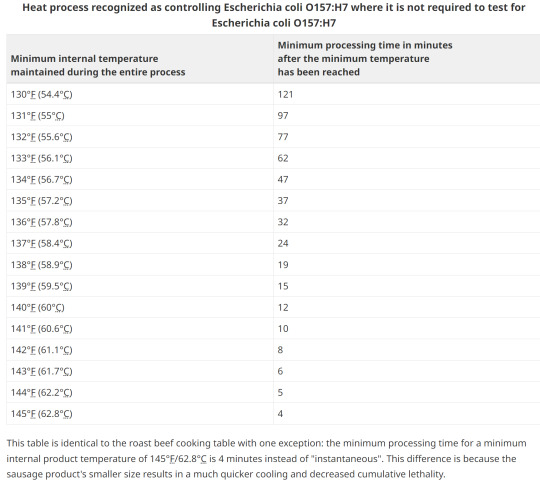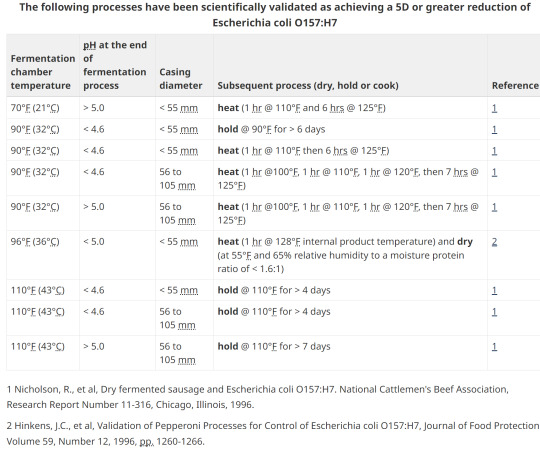#shelf monitoring
Explore tagged Tumblr posts
Text
Digital Shelf Monitoring is the Future of E-commerce: Is your Intelligence Platform Covering Every Dark Store and Pin Code?
The Indian e-commerce sector is in a state of rapid transformation, with experts projecting it to hit an astonishing $400 billion+ by 2030, powered by a 19% annual growth rate, according to Inc 42 report. With this kind of momentum and each one vying for prominence on the digital shelf in a market as sprawling and diverse as India brands must dig deeper, focusing not only on top-tier cities but extending their reach into every dark store and at the pin code level to get the true picture.
The major challenge faced by brands is scaling, covering multiple platforms and categories. This requires a solution such as mFilterIt that covers more than 150 platforms globally with all pin-codes.
Brands aiming for success need to look beyond traditional ways, integrated multi-platform intelligence is needed. Competition is fierce, digital intelligence is the key to unlock brand success across platforms.
Trends Shaping Indian E-commerce
Expansion Across Tier-2 and Tier-3 Cities: The growth of e-commerce extends beyond large cities, with consumers in Tier-2 and Tier-3 cities embracing digital shopping. Brands aiming to grow in these areas must tailor their strategies to local preferences region-specific marketing, opening new channels for growth through personalization.
Also, with over 526 dark stores across India, Blinkit plans to double the number to 1,000 in the next one year. On the other hand, Zepto, at present, already has a network of over 340 dark stores across seven cities in India.
Market Intelligence for Real-Time Data Insights: Brands are leveraging advanced tools such as mScanIt, Digital Commerce Intelligence for real-time actionable insights. This enables dynamic pricing, hyper-targeted marketing, and timely inventory management, all of which require brands to pivot from broad strategies to tailored experiences for each consumer journey.
Digital Shelf Monitoring in UAE, USA, India, Dubai.
Click here to read more about: Digital Shelf Monitoring is the Future of E-commerce: Is your Intelligence Platform Covering Every Dark Store and Pin Code?
#digital shelf#digital shelf monitoring#shelf monitoring#ad fraud#ad fraud solution#ad fraud detection
0 notes
Text
honestly figuring out an etho random mention mystery after several years of having wondered it bc he was shamed into showing his desk setup is amazing. i'd bet money that third monitor has been sitting on his desk, broken, for at minimum four years. he got a "second" monitor in 2020 although he used to have two ages before that. QED the old one broke, he never got rid of it, and eventually got a new second (third) one. mystery solved
#peter posts#im superior to etho bc my superfluous extra monitors are not still on my desk. theyre on a shelf and my record player
306 notes
·
View notes
Text
I have sinned today at comic con, but my child was calling out to me

#it's so cute I couldn't resist#now I really want like#a little shelf above my monitor#to put cute little things on there#made in abyss#nanachi
32 notes
·
View notes
Note
hi Bam! So I might’ve sent you something the other day…it said it was supposedly delivered Saturday, did it ever come? Hope I’m not bothering you! Just majorly anxious over postal mishaps 😅
WREN BELOVED YES I GOT IT
I SHARED IT TO SOME DISCORDS AND SPAMMED IT TO PEOPLE SLDKGHLDSKKLDSHG I was literally yelling at @vurelly about them today and we were yelling together because, you know :D
The only pictures I have of them currently are with my very messy room in the background so I'm waiting to get somewhere I can have some classy nice lighting to give them the proper justice htey need and KLSDNGLKHDSGKLHGLKSDG
#I AM#GOGN CRAZY#god they are so well made#ngl i was having a very stressful week and october has been a bundle of stress so it was like straight dopemin to the brain#alos SORRY i havent been online as much as i need to be ive been hella busy but I am#holding them#so gently#I honestly to get a monitor shelf thing like those plastic racks and have them sit on top i think#also i have to hunt dow n a kofi for you soon
123 notes
·
View notes
Text
unbelievable that out of all the birthday presents that i've put on my wishlist the one i'm the most hyped for is a $40 ikea shelf that can't even actually attach to my desk
#I COULD PUT SO MUCH STUFF ON IT.......#i literally have to stop myself from buying more random shit i find at op shops just so i could hypothetically put it all on that shelf#but my desk is so MESSY! it would fit behind my monitors so PERFECTLY... what else is a girl meant to do damn
3 notes
·
View notes
Text

BLASTS UNFORGETTABLE SILHOUETTE
#I LOVE HER SOOOOOO MUCH#idk if i wanna put dion w her and make it drg shelf#bc i rly want him w my monitor.#it depends on how good they look all together bc freya is as big as him#and doesnt look good w aerith#brianna babbles
13 notes
·
View notes
Text
yeah im a gamer ive modded the fuck¹ out of my setup² 😏🙂↕️
¹ clamped a bunch of shit ² regular work desk
#sticky note pad + unused coaster set under the clamp head to put my clampon keyboard tray up so i can adjust the desk height#so i can use my keyboard/mouse without fucking up my wrist or neck#old monitor stand box as footrest so its the right height to not fuck up my knee#im really excited about the clampon shelf im getting soon#also really scared my desk is gonna collapse from all this shit urghfjv#but YAY ive had a really good day i cleaned the house reset my room fixed my desk up#oh fuck its 2.30 i havent had lunch yet.....oops
4 notes
·
View notes
Text

LOOK WHAT I FOUND IN MY MAIL BOX I WASN'T EVEN EXPECTING THEM TODAY
THEY ACTUALLY JINGLE IM GONNA CRY THEY'RE SO CUTE
#Fnaf Sun#Fnaf Moon#Fnaf DCA#these two are the first pieces of DCA merch for me#it's all so stupid expensive because most of it is import#and I can't get a lot of the fanmade stuff because I'm a European peasant lol :')#BUT THAT'S OKAY#I'm not sure if these are even official but I don't care they're adorable#gonna take my sweet time adding to my collection over time#for now these two get an honor spot on the shelf above my monitor so I can see them whenever I look up <3333#Rhonu blogs Fnaf
25 notes
·
View notes
Text
HOW DO I HAVE SO MUCH STUFF 😭😭
#im so tired and im still sick 😭#my family also put my shelf up too low so now my monitor doesnt fit under it and idk if i should just move the desk#highkey hate moving
4 notes
·
View notes
Text
Hm. Readjusting placement of things on my computer desk for better ergonomics and ability to SEE my monitors without eye strain and discomfort when working on my graphics tablet as primary view/workspace.
And now I need to rework all the wiring.
But not today.
I suspect this whole week will be a game of micro adjustments.
#still haven’t figured out the whole deal#as in- swapping out the graphics tablet#and swapping in my midi controller/keyboard+pads#thinking about how THAT is what my big sturdy monitor shelf#will be for#too bad the stand for my cintiq#makes it weight a ton and is really bulky#so very awkward#honestly#this whole computer desk is awkward#and I would not have designed it like this#but I can’t change it out#bc built in and blah blah blah#maybe in some other future place#that doesn’t yet exist?#le sigh
5 notes
·
View notes
Text
i have a weird obsession with reading parenting news articles and stuff despite never wanting to become a parent bc they’re just so fascinating to me…… like the brand of neurosis people have is so interesting . i just read a long ass article this mom wrote freaking tf out about whether or not to buy an elf on the shelf bc on one hand she was tired and exhausted from all of the other stuff she does for christmas for her kids but on the other she’s like omg i don’t want to ROB them of more christmas magic 😖 like i promise it’s not that serious but also i feel bad bc she’s big stressing over literally nothing . also she included a bit where her husband was like yeah let’s get an elf this year . and she was like okay i’m too busy do you think you could take point on it? and he was like *silence* like 😭 these women make me so sad i prommy you’re not ruining your children’s childhoods by not doing every single stupid tradition but your husband is ruining YOUR life by being fucking useless and refusing to do one thing like i wish they could focus on that instead of taking on all of this contrived blame :(
#and at the end after writing paragraphs over how exhausted she is she was like idk maybe i’ll still get one ….#bestie pls free yourself#also side note but she included a bit about how a psychologist told her that elf of the shelf’s teach bad lessons to kids about being#constantly monitored and the idea of being ‘naughty’ and i was like PERIOD but she didn’t care skdhdjdjd#maybe focus on not putting ur kids in a panopticon and divorcing ur husband instead of writing news columns (said with empathy)
9 notes
·
View notes
Text
Chef WK, lead charcuterie specialist in Alberta Canada
Table of contents
1. Control Program Requirements for Fermented Meat Products
2. Facility and Equipment Requirements
3. Starter Culture
4. Chemical Acidification
5. Water Activity Critical Limits
6. Time and Temperature for Fermented Products
7. Fermentation Done at a Constant Temperature
8. Examples of Degree-hours at constant room temperatures
9. Fermentation Done at Different Temperatures
10. Fermentation done at Different temperatures
11. What happens if fermentation fails to hit critical limit?
12. E. coli and Salmonella Control in Fermented Sausages
13. Options for E. coli validation
14. Option1; Heating
15. Option 2; pH, heating, holding, diameter
16. Safety and consistency
Control Program Requirements for Fermented Meat Products
The producer must have a program in place to assess the incoming product. This program should outline specifications for the incoming ingredients. This may include criteria including receiving temperature, farm/ supplier, lot code or packed on date, species/cut etc.
2. Facility and Equipment Requirements
Equipment used in the fermentation process must be included in the operator's prerequisite control programs. These must include the following elements:
Temperature in the fermentation, drying and smoking chambers must be uniform and controlled to prevent any fluctuation that could impact on the safety of the final product.
Fermentation, drying and smoking chambers must be equipped with a shatter resistant indicating thermometer, (or equivalent), with graduations of 1°C or less. If mercury thermometers are used, their mercury columns must be free from separations. All thermometers must be located such that they can be easily read.
Fermentation and smoking chambers must be equipped with a recording thermometer for determining degree-hours calculations in a reliable manner. Recording thermometers are also preferable in drying and aging rooms but, in these rooms, it may be sufficient to read and record the temperatures 2 times a day.
Drying and aging rooms must be equipped with humidity recorders in order to prevent uncontrolled fluctuations of the relative humidity. The only alternative to an automatic humidity recorder in these rooms would be for the company to manually monitor and record ambient humidity twice a day (morning and afternoon) every day with a properly calibrated portable humidity recorder.
For routine monitoring, accurate measurement electronic pH meters (± 0.05 units) should be employed. It is important that the manufacturer's instructions for use, maintenance and calibration of the instrument as well as recommended sample preparation and testing be followed.
When the aw of a product is a critical limit set out in the HACCP plan for a meat product, accurate measurement devices must be employed. It is important that the manufacturer's instructions for use, maintenance and calibration of the instrument be followed.
3. Starter Culture
The operator must use a CFIA approved starter culture. This includes Freeze-dried commercially available culture as well as back-slopping (use of previously successful fermented meat used to inoculate a new batch). When performing back-slopping, the operator must have a control program in place to prevent the transmission of pathogens from when using the inoculum from a previous batch to initiate the fermentation process of a new batch. These must include:
The storage temperature must be maintained at 4°C or less and a pH of 5.3 or less.
Samples for microbiological analysis must be taken to ensure that the process is in line with the specifications.
The frequency of sampling is to be adjusted according to compliance to specifications.
Any batch of inoculum which has a pH greater than 5.3 must be analysed to detect at least Staphylococcus aureus. Only upon satisfactory results will this inoculum be permitted for use in back slopping.
This can be an expensive and a time exhaustive process and is generally avoided due to food safety concerns. AHS does not allow back-slopping.
[Chef WK was in communication with the U of A to get his method, a starter mix, studied.]
4. Chemical Acidification
If product is chemically acidified by addition of citric acid, glucono-delta-lactone or another chemical agent approved for this purpose, controls must be in place and records kept to ensure that a pH of 5.3 or lower is achieved by the end of the fermentation process. These acids are encapsulated in different coatings that melt at specific temperatures, which then release the powdered acids into the meat batter and directly chemically acidulate the protein.
Summer sausage is a very common chemically acidified product. The flavor profile tends to be monotone and lacking depth.
5. Water Activity Critical Limits
The aw may be reduced by adding solutes (salt, sugar) or removing moisture.
Approximate minimum levels of aw (if considered alone) for the growth of:
molds: 0.61 to 0.96
yeasts: 0.62 to 0.90
bacteria: 0.86 to 0.97
Clostridium botulinum: 0.95 to 0.97
Clostridium perfringens: 0.95
Enterobacteriaceae: 0.94 to 0.97
Pseudomonas fluorescens: 0.97
Salmonella: 0.92 - 0.95
Staphylococcus aureus: 0.86
parasites: Trichinella spiralis will survive at an aw of 0.93 but is destroyed at an aw of 0.85 or less.
The above levels are based on the absence of other inhibitory effects such as nitrite, competitive growth, sub-optimum temperatures, etc., which may be present in meat products. In normal conditions, Staphylococcus aureus enterotoxins are not produced below aw 0.86, although in vacuum packed products this is unlikely below aw 0.89.
6. Time and Temperature for Fermented Products
Certain strains of the bacteria Staphylococcus aureus are capable of producing a highly heat stable toxin that causes illness in humans. Above a critical temperature of 15.6°C, Staphylococcus aureus multiplication and toxin production can take place. Once a pH of 5.3 is reached, Staphylococcus aureus multiplication and toxin production are stopped.
Degree-hours are the product of time as measured in hours at a particular temperature multiplied by the "degrees" measured in excess of 15.6°C (the critical temperature for growth of Staphylococcus aureus). Degree-hours are calculated for each temperature used in the process. The limitation of the number of degree-hours depends upon the highest temperature in the fermentation process prior to the time that a pH of 5.3 or less is attained.
The operator is encouraged to measure temperatures at the surface of the product. Where this is not possible, the operator should utilize fermentation room temperatures. The degree hour calculations are based on fermentation room temperatures. Temperature and humidity should be uniform throughout the fermentation room.
A process can be judged as acceptable provided the product consistently reaches a pH of 5.3 using:
fewer than 665 degree-hours when the highest fermentation temperature is less than 33°C;
fewer than 555 degree-hours when the highest fermentation temperature is between 33° and 37°C; and
fewer than 500 degree-hours when the highest fermentation temperature is greater than 37°C.
This means that as the temperature increases, the amount of time that you have available to reach 5.3 or under is shorter. The warmer the temperature, the sharper the log growth phase of bacteria, which equates to more overshoot in lactic acid production, faster.

8. Examples of Degree-hours at constant room temperatures
Example 1:
Fermentation room temperature is a constant 26°C. It takes 55 hours for the pH to reach 5.3.
Degrees above 15.6°C: 26°C - 15.6°C = 10.4°C Hours to reach pH of 5.3: 55 Degree-hours calculation: (10.4°C) x (55) = 572 degree-hours
The corresponding degree-hours limit (less than 33°C) is 665 degree-hours.
Conclusion: Example 1 meets the guideline because its degree-hours are less than the limit.
Example 2:
Fermentation room temperature is a constant 35°C. It takes 40 hours for the pH to reach 5.3.
Degrees above 15.6°C: 35°C - 15.6°C = 19.4°C Hours to reach pH of 5.3: 40 Degree-hours calculation: (19.4°C) x (40) = 776 degree-hours
The corresponding degree-hours limit (between 33 and 37°C) is 555 degree-hours.
Conclusion: Example 2 does not meet the guideline because its degree-hours exceed the limit
9. Fermentation Done at Different Temperatures
When the fermentation takes place at various temperatures, each temperature step in the process is analyzed for the number of degree-hours it contributes. The degree-hours limit for the entire fermentation process is based on the highest temperature reached during fermentation.
Example 1:
It takes 35 hours for product to reach a pH of 5.3 or less. Fermentation room temperature is 24°C for the first 10 hours, 30°C for second 10 hours and 35°C for the final 15 hours.
Step 1
Degrees above 15.6°C: 24°C - 15.6°C = 8.4°C Hours to reach pH of 5.3: 10 Degree-hours calculation: (8.4°C) x (10) = 84 degree-hours
Step 2
Degrees above 15.6°C: 30°C - 15.6°C = 14.4°C Hours to reach pH of 5.3: 10 Degree-hours calculation: (14.4°C) x (10) = 144 degree-hours
Step 3
Degrees above 15.6°C: 35°C - 15.6°C = 19.4°C Hours to reach pH of 5.3: 15 Degree-hours calculation: (19.4°C) x (15) = 291 degree-hours
Degree-hours calculation for the entire fermentation process = 84 + 144 + 291 = 519
The highest temperature reached = 35°C
The corresponding degree-hour limit = 555 (between 33°C and 37°C)Conclusion: Example 1 meets the guideline because its degree-hours are less than the limit.
10. Fermentation done at Different temperatures
Example 2:
It takes 38 hours for product to reach a pH of 5.3 or less. Fermentation room temperature is 24°C for the first 10 hours, 30°C for the second 10 hours and 37°C for the final 18 hours.
Step 1
Degrees above 15.6°C: 24°C - 15.6°C = 8.4°C Hours to reach pH of 5.3: 10 Degree-hours calculation: (8.4°C) x (10) = 84 degree-hours
Step 2
Degrees above 15.6°C: 30°C - 15.6°C = 14.4°C Hours to reach pH of 5.3: 10 Degree-hours calculation: (14.4°C) x (10) = 144 degree-hours
Step 3
Degrees above 15.6°C: 37°C - 15.6°C = 21.4°C Hours to reach pH of 5.3: 18 Degree-hours calculation: (21.4°C) x (18) = 385.2 degree-hours
Degree-hours calculation for the entire fermentation process = 84 + 144 + 385.2 = 613.2
The highest temperature reached = 37°C
The corresponding degree-hour limit = 555 (between 33°C and 37°C)
Conclusion: Example 2 does not meet the guidelines because its degree-hours exceed the limit.
11. What happens if fermentation fails to hit critical limit?
What happens if the batch takes longer than degree-hours allows? For restaurant level production, it's always safer to discard the product. The toxin that Staph. Aureus produces is heat stable and cannot be cooked to deactivate. In large facilities that produce substantial batches, the operator must notify the CFIA of each case where degree-hours limits have been exceeded. Such lots must be held and samples of product submitted for microbiological laboratory examination after the drying period has been completed. Analyses should be done for Staphylococcus aureus and its enterotoxin, and for principal pathogens, such as E. coli O157:H7, Salmonella, and Clostridium botulinum and Listeria monocytogenes.
If the bacteriological evaluation proves that there are fewer than 104 Staphylococcus aureus per gram and that no enterotoxin or other pathogens are detected, then the product may be sold provided that it is labelled as requiring refrigeration.
In the case of a Staphylococcus aureus level higher than 104 per gram with no enterotoxin present the product may be used in the production of a cooked product but only if the heating process achieves full lethality applicable to the meat product.
In the case where Staphylococcus aureus enterotoxin is detected in the product the product must be destroyed.
12. E. coli and Salmonella Control in Fermented Sausages
Business' that manufacture fermented sausages are required to control for verotoxinogenic E. coli including E. coli O157:H7 and Salmonella when they make this type of product. This includes:
establishments which use beef as an ingredient in a dry or semi-dry fermented meat sausage;
establishments which store or handle uncooked beef on site;
Establishments which do not use beef and do not obtain meat ingredients from establishments which handle beef are not currently required to use one of the five options for the control of E. coli O157:H7 in dry/semi-dry fermented sausages.
Any processed RTE product containing beef or processed in a facility that also processed beef, must be subjected to a heat treatment step to control E. coli O157:H7. Heating to an internal temperature of 71°C for 15 seconds or other treatment to achieve a 5D reduction is necessary. This is a CFIA requirement and is not negotiable.
Uncooked air dried products produced as RTE, must meet shelf stable requirements as detailed for Fermented-Dry products.
13. Options for E. coli validation
Without lab testing, the two main methods of validation are with heat treating by either low temp and a long duration, or various hotter processing temperatures for a shorter timeframe.
A challenge study to validate a process can take 1 year and over $100,000!
14. Option1; Heating

15. Option 2; pH, heating, holding, diameter

16. Safety and consistency
The aw and pH values are critical in the control of pathogens as well as to ensure shelf-stability in all semi-dry and dry fermented meat products. Each batch must be tested for aw and/or pH in order to verify that the critical limits are met.
Although aw measurement is mandatory only for shelf stable products, it is strongly recommended that the producer determine the aw values achieved for each product type they manufacture and for each product. Once this has been established, frequent regular checks should be made to ensure consistency. In the U.S., they rely on moisture to protein ratio and have set targets. This lab-tested value is a direct correlation of the % water to % meat protein and not aw. This gives more consistency to common names. For example, to legally call a product "jerky" it must have a MPR of 0.75:1 or lower. Remember your ABCs:
Always be compliant.
-AND-
Documentation or it didn't happen.
(tags)
Charcuterie,Fermented Meat,Food Safety,Starter Culture,Chemical Acidification,Water Activity,Fermentation Process,Degree-Hours Method,Foodborne Pathogens,Meat Processing Guidelines,Chef WK Alberta Canada,Food Industry Standards,pH Critical Limits,Thermal Processing,Food Preservation,Food Microbiology,Sausage Fermentation,Charcuterie Expertise,Fermented Meats ,Food Safety Standards,Food Processing Guidelines,Starter Cultures,Chemical Acidification,Water Activity (a_w),Critical Limits,Degree-Hours Method,Foodborne Pathogens,Meat Processing Equipment,Processing Facility Requirements,Hazard Analysis and Critical Control Points (HACCP),Food Preservation Techniques,Temperature Control,Pathogen Reduction,Food Industry Compliance,Documentation Practices,Heat Treatment,pH Control,Food Stability,Consistency in Production,Microbial Testing,Real-time Monitoring,Process Validation,Regulatory Requirements,Verotoxigenic E. coli,Lethality Standards,Product Labelling,Spoilage Prevention,Enterotoxin Detection,Shelf-Stable Products,Moisture to Protein Ratio (MPR)
#Charcuterie#Fermented Meat#Food Safety#Starter Culture#Chemical Acidification#Water Activity#Fermentation Process#Degree-Hours#Meat Processing Guidelines#Thermal Processing#Food Preservation#Food Microbiology#Sausage Fermentation#Starter Cultures#Critical Limits#Meat Processing#Food Preservation Techniques#Temperature Control#Pathogen Reduction#Food Industry#Heat Treatment#pH Control#Food Stability#Microbial Testing#Real-time Monitoring#Process Validation#Spoilage Prevention#Enterotoxin Detection#Shelf-Stable Products#Moisture to Protein Ratio (MPR)
3 notes
·
View notes
Text
another confession: I purchased. a string of turtles plant. online.
!! in my defense !!!! they look like!!! strings!!!! of turtles!!!

...ig.ignore the other plants in the order-
#roz does plont#I am trying to be good and not buy too many plants and get most of them through uhh purloining#so as to not spend dollars#.....but it truly is a drug#luckily I am being restricted by my lack of space but I am already coming up with plans on how I may jury rig up a shelf#behind my monitor....#and already plan to get at least 2 more condiment racks for my window sill lmao...#and also grow lights cuz I think my double paned windows are in fact preventing uv from getting thru#......this is a problem
2 notes
·
View notes
Text




Elevate your monitor and streamline your workspace with the AQQEF Monitor Stand Riser. Featuring 3 USB ports and 2 charging ports, a sturdy laptop shelf, and a convenient storage drawer, this organizer enhances efficiency and reduces clutter. With adjustable width and ergonomic design, it offers comfort and stability for a healthier work environment.
#essentials#improvement#luxury#men#accessories#essential#cool gadgets#shopping#amazon#man#men must have#must have#gadgets#gentleman#elegance#elegant#classy#men style#for men#workspace#monitor stand riser#workstation#monitor#monitor stand#desk#desk shelf
2 notes
·
View notes
Text



My ex/roommate moved out and while I am kinda sad and now lonely in a house by myself I took the time to reorganize after a few days and make the space mine again.
And its really refreshing to see my nerd collection fill up a bookshelf just like my magic collection has.
Nana holding my vibe (no i didn't edit a wall mount off the wall sh my paint is just pixel-y)
#the oldest thing would be the n64 which I've had since age 6 :3#it still works the Dreamcast probably doesn't tho :c#idek what to tag this as#home shit#actually no oldest would be my nanny on the magic shelf but i mean#anyway i have a 70 inch monitor now at least
2 notes
·
View notes
Text
>buy new monitor
>its supposed to be able to incline back
>base is hard as a dead horse and wont budge at all
>ask to be sent a replacement base
>receive a base thats not only from an entirely different model and too big to fit but is also hard as hell just like the one i have now

#WHY CANT ANYTHING EVER GO SMOOTHLY THE FIRST TIME. OR THE SECOND ONE FOR THAT MATTER#i have a fucking shelf above my desk that i use and would have to tear down to have the monitor be eye level. i NEED the incline#just fucking end me at this point if im this cursed to have everything that can go wrong to go wrong always no matter what
2 notes
·
View notes